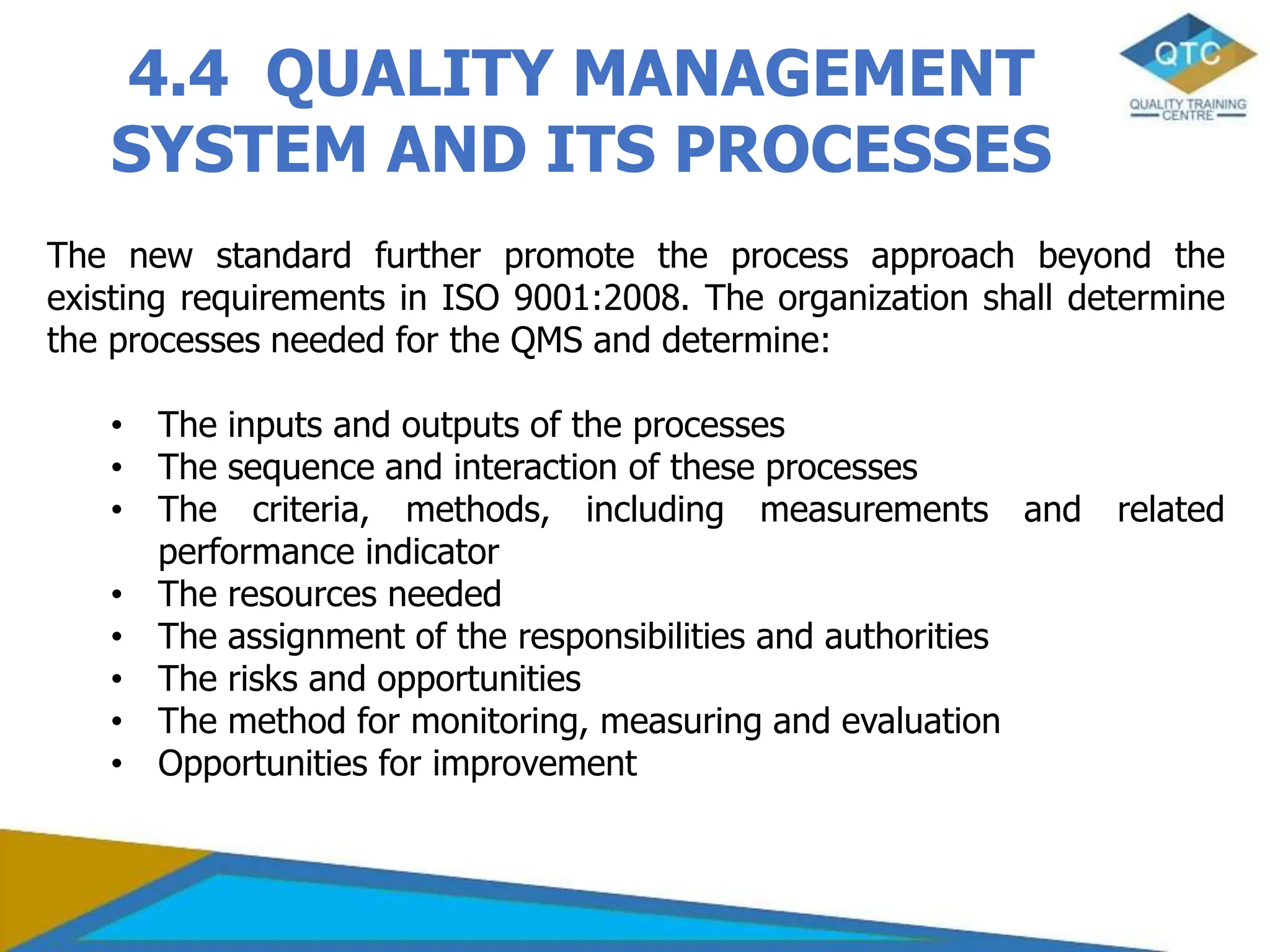The document provides an agenda for a two-day training course on understanding and implementing ISO 9001:2015. Day 1 covers introductions to quality and the ISO standard, as well as context of the organization, leadership, planning, support, and performance evaluation and improvement. Presentation topics include what is quality, customer requirements, responsibility for quality, and the structure and requirements of ISO 9001:2015. Day 2 will focus on operation, monitoring and measurement, internal auditing, and management review.











































































































